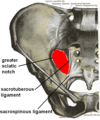Anatomy Q's from the booklet Flashcards
How do we count inter-costal spaces in the living?
Feel for the ridge between the manubrium and body of the sternum. feel laterally and you will feel a costal cartilage, this is the second cartilage. Count the ribs up and down from here.
What happens if the valves are incompetent?
During ventricular systole blood some of the blood flow backwards through the valve into the atria. This will make a noise heard as a heart murmer and can over load the atria.
What is the purpose of having cartilage in the trachea and bronchi?
In the trachea above the first rib – it stops the airway collapsing on inspiration.
In the airways below the first rib (in the chest), it stops the airways collapsing on forced expiration.
Do the trachea and bronchi have muscle in them?
Yes, to alter the calibre of the airways.
Where would you listen to the upper lobe of a lung?
Anteriorly high up on the chest wall.
Where would you listen to the right middle lobe?
5th intercostal space just to the right of the sternum.
Name three of the abdominal organs that the lung overlaps
Liver, spleen, upper poles of the kidneys (just), adrenal glands, stomach
How do you distinguish between the vessels at the hilum of the lung?
Bronchus has cartilage in the wall. The pulmonary artery is thicker walled and usually superior. The pulmonary veins are thinner walled and tend to be posterior.
How many pairs of ribs are there?
12
What are the contents of the intercostal space?
Intercostal artery, vein and nerve.
What connects the ribs to each other?
The intercostals muscles.
What bones do the ribs articulate with?
The sternum at the front and the thoracic vertebrae at the back
Do bronchioles have cartilage in their walls?
NO
What happens to the vertical diameter of the thoracic cavity when the diaphragm contracts?
It increases because the diaphragm is pulled downwards.
What happens to the transverse diameter of the thoracic cavity when the intercostals muscles contract?
It increases by lifting the lower ribs upwards towards the first rib which is fixed.
Look at this lovely diagram and learn it

Which morphology has the greatest power?
Multipennate muscles
Which morphology can pull the furthest distance?
Strap muscles
Where does the pectoralis major muscle insert?
The humerus
Describe the terms origin and insertion in muscle?
Origin is where the muscle starts, usually it does not move when the muscle contracts (eg. the ribs for pectoralis major). Insertion is where the muscle ends, it usually does move when the muscle contracts (eg. humerus for pectoralis major).
Where does the lymphatics of the breat drain into?
Lateral half to the axillary lymph nodes, medial half to internal mammary lymph nodes (in the chest).
What are accessory muscles of respiration?
Muscles which are not usually used in respiration (breathing) but which can be used during respiratory distress, such as asthma.
What is the ligamentum arteriosum?
It is the reminant of the embryological shunt between the pulmonary artery and the aorta.
Does the vagus nerve enter the abdomen?
Yes, passing through the oesophageal hiatus in the diaphragm.









